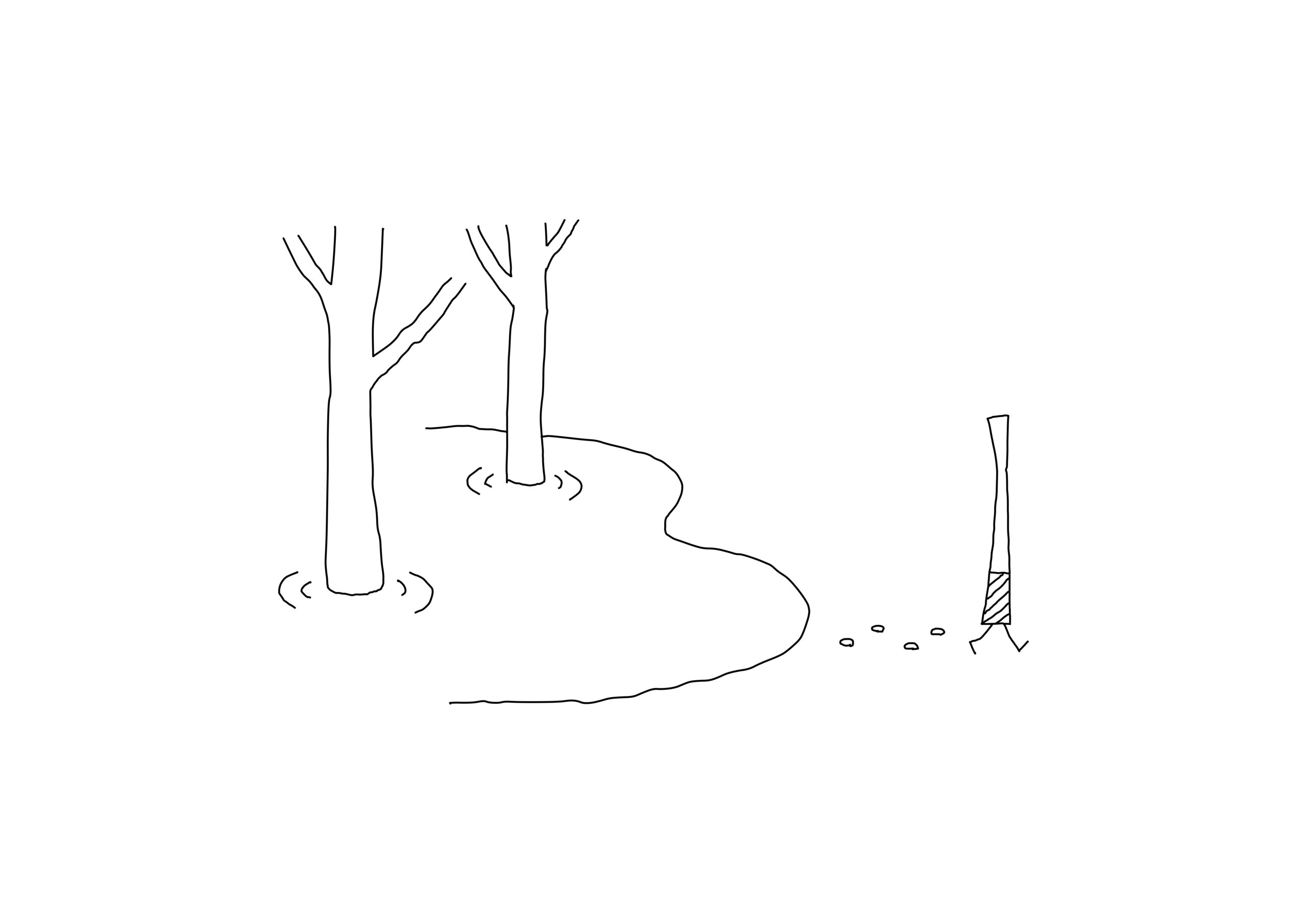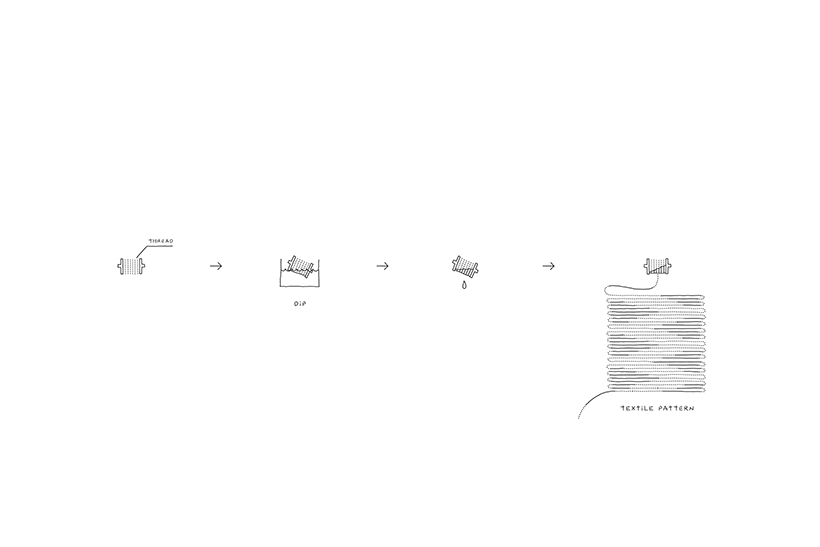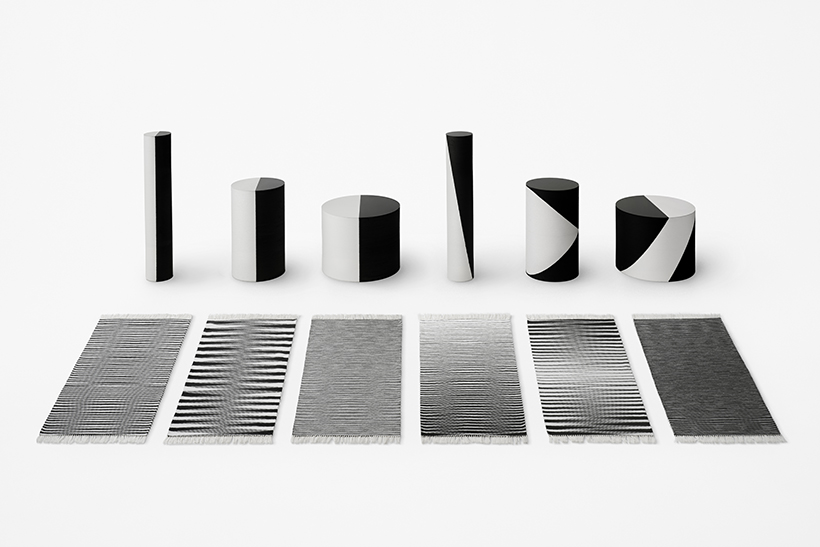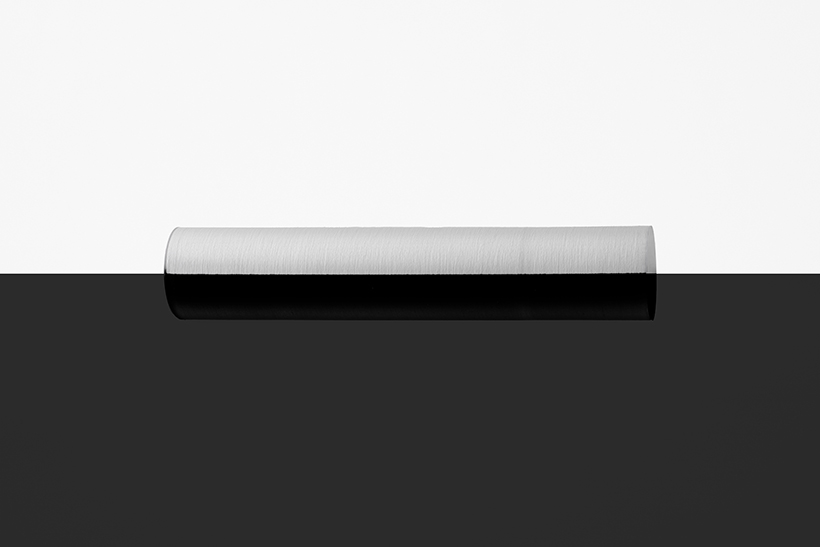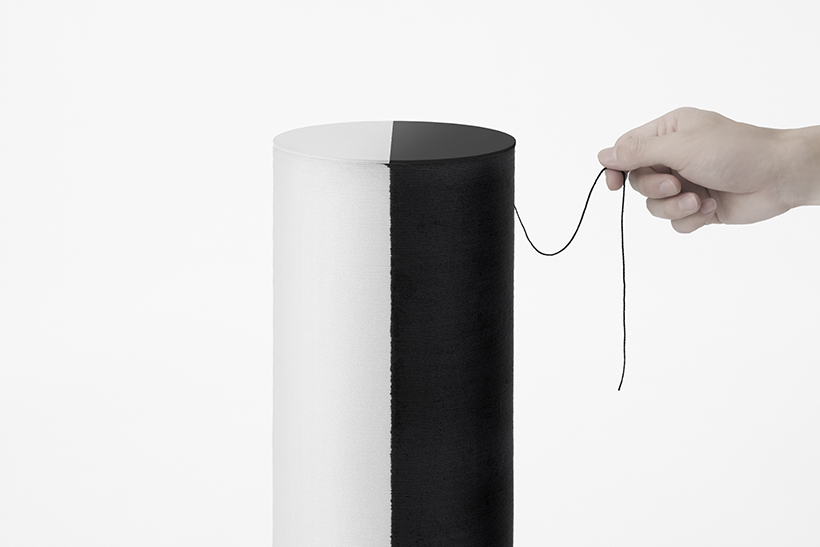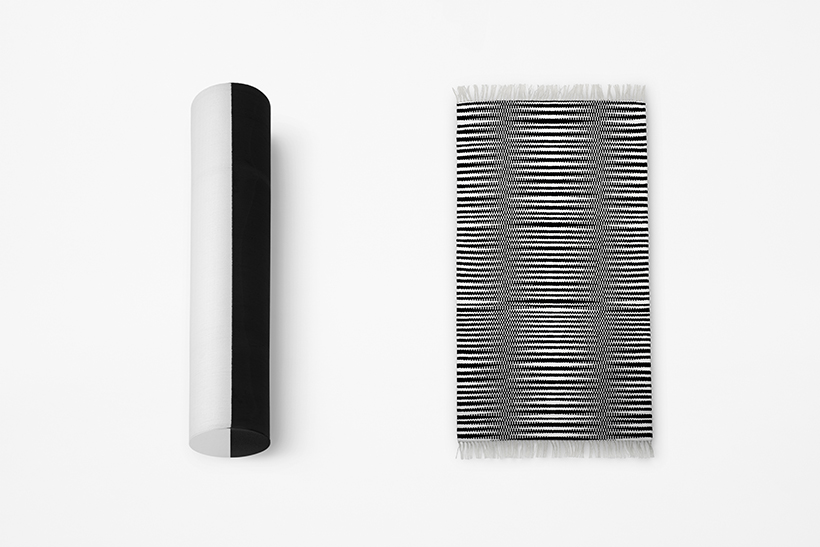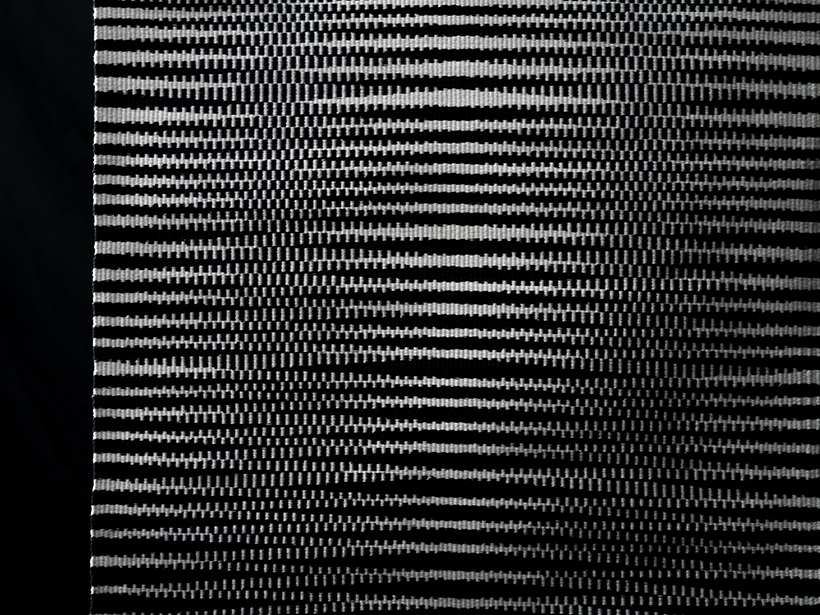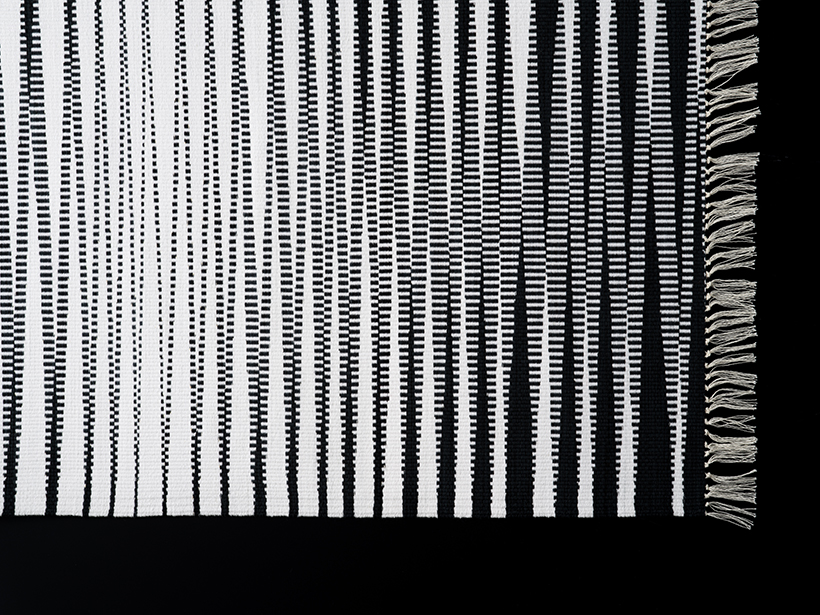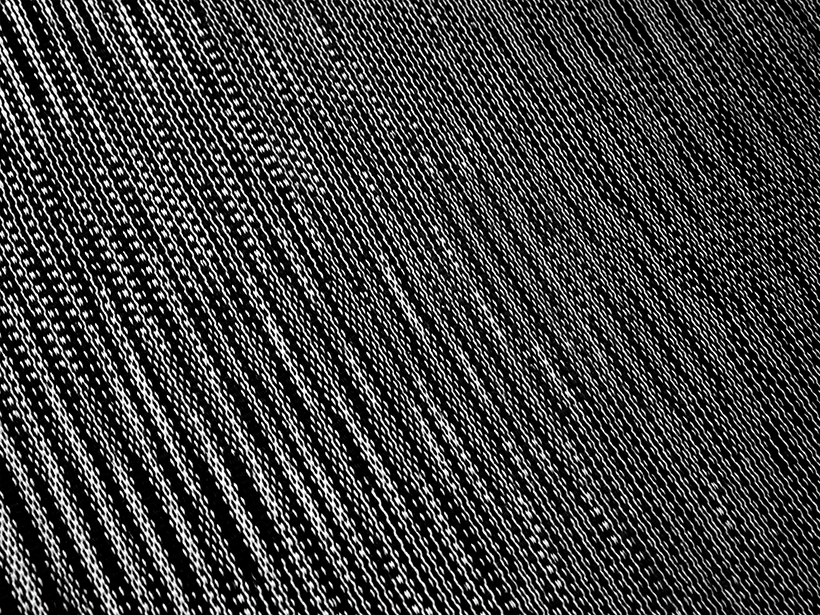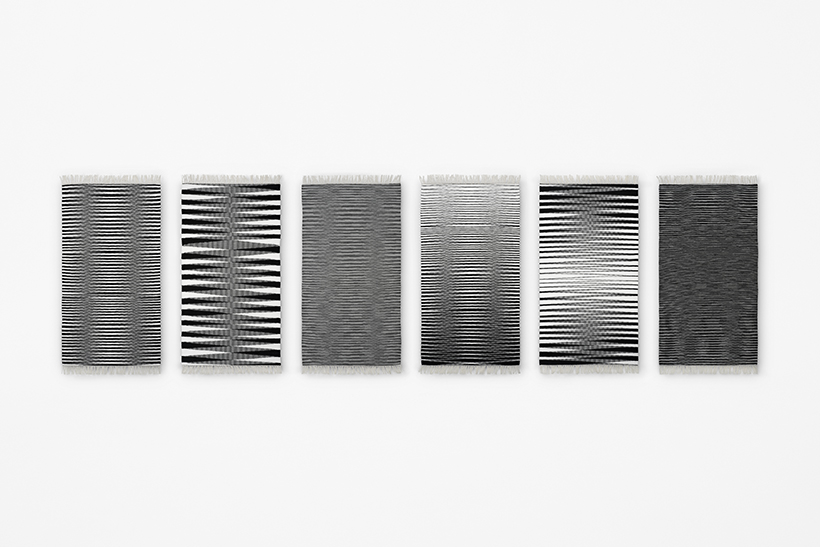pond dipping
When plants in ponds and swamps absorb water and mud, the parts that were submerged discolor; this is like “dying of the natural world.” As opposed to modern textile methods, where uniformly dyed threads are woven together, different weaves are used to produce patterns, or printing is applied to transfer dyes, the design aimed to create textile patterns through the simple act of “dipping.”
First, thread is wrapped around a cylindrical tube, and half of the spool is dipped in black dye.
Unwinding the spool revealed that the thread alternates in color between dyed black and undyed white. When the thread was used to weave a textile, a striped pattern was born. Repeating the same process with spools of different sizes, it was discovered that the gradual slippage between the frequency of the dye and that of the weave would produce different textile patterns. Additionally, if they are dipped at an angle or in two portions, totally new expressions emerge, like checkered patterns and gradation.
Japan has historically had a weaving culture called “kasuri-ori,” in which threads are partially masked during dying to produce a faded effect when woven. Compared to this traditional dying process based on careful planning, the relevant design, whose expression depends only on a dipping angle and spool thickness, could be considered a more primitive method. The resulting patterns might be interpreted in relation to “patterns of nature.”
